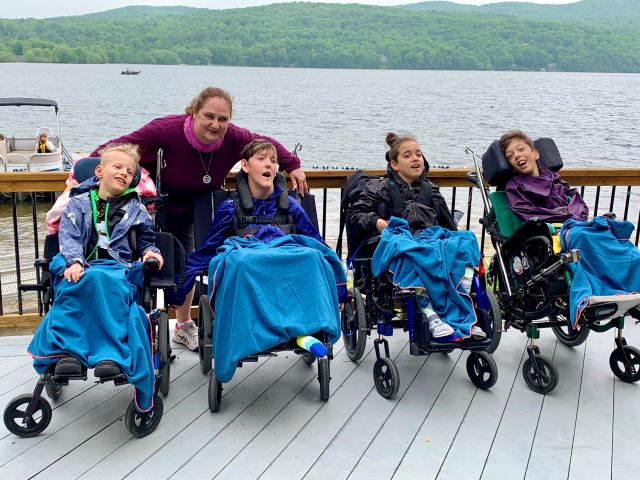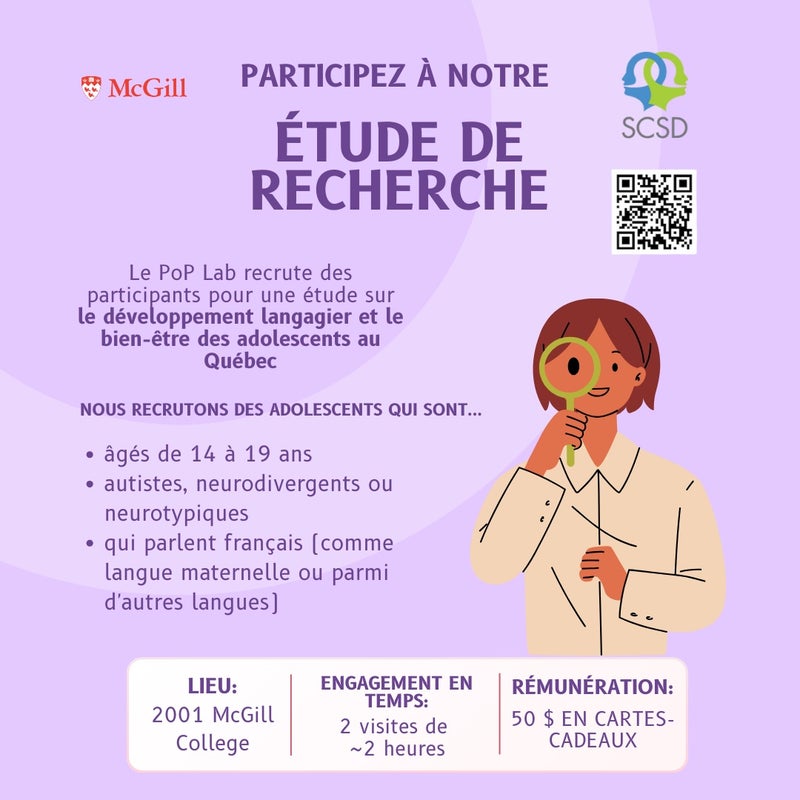Dedicated special needs teacher Leslie Levinson retires after 36 years

Leslie Levinson began working at Mackay Centre School in 1989 and, this June, walked out of the only place she ever taught with myriad memories of students who have been given a voice thanks to her.
Levinson is credited with starting, in 1998, the first Augmentative and Alternative Communication class at Mackay to help children with complex communication needs. She explained she wanted to restart the program that had been previously phased out. Today there are four such classes, with six students in each at the English Montreal School Board school in NDG.
“The nicest memories are when you see you’ve had an impact, that you’ve given a voice and words to kids that had lots of stuff in them but no way to get it out,” she said. “It’s nice when they can say ‘I love you’ to their mom.”
Levinson was working as an aide at Mackay when a teaching spot opened in 1990. She tried her hand at physical education, pre-kindergarten and as a resource for Grades 2 and 3. She then convinced her principal to let her attend a workshop in New York about students with complex communications needs. It was there that Levinson found her passion.
“[Until then,] the school would pull the kids out of class for an hour a week with a speech therapist, and I said, ‘it’s not enough. You’re teaching them a language – they have to be immersed in that’.”
Almost all of Levinson’s former students have cerebral palsy.
One of those students, River Fraser, first joined Levinson’s “Alternative and Augmentative Communication” class when he was 4. Now 15, his last class with Levinson was in June, her last month teaching at Mackay. Because he has little control over his hands, he uses a computer device that is controlled by his eyes to communicate. He selects images, words, letters and numbers on a screen by fixing his gaze on them, which are then dictated by a computer-generated voice.
River’s mother, Anna Calvert, referred to Levinson as a second mom to all her students, while being the biological mom to her own four kids. “Most of all, you have helped each one of these kids to find their own voice, and you have shown them that they deserve to be listened to,” Calvert wrote in a thank-you note for Levinson’s retirement.
“There is no bigger gift you could give to them and to all of us.”
Levinson used rudimentary pictures and drawings as tools until technology came on the scene and rapidly made communication easier. Still, she maintains learning to spell is the foundation for all her students.
“With spelling, you can do anything,” she said. “You can surf the net, write emails, anything.”
“You don’t get the results right away but it’s the same with learning any language,” she said.
Richard Côté, whose daughter, Ava, was taught by Levinson, wrote in an email to her that the family will always be grateful for the role she played in their daughter’s journey.
“You have been so much more than a teacher to her. You’ve been a mentor, an advocate and a guiding light,” who helped shaped the “confident, joyful person she is today.”
Levinson said she’ll still go back to the school to supply teach, in between playing tennis, volunteering for NDG hockey, visiting her grandchild in Kingston and helping her aging mother and mother-in-law.
“To do something that you love is a privilege,” she said.
“You’re very appreciative of the parents because they put so much trust in you; they open up to you; they share things with you.
“I’ve been with parents at their best times, and I’ve been with them at their worst times.”
Colleague Anne-Marie Yaworski said the path to communication for their students is filled with obstacles: complex bodies, malfunctioning equipment and ever- changing needs of the children. It takes courage, hope and patience to do the job.
“We should measure her success on how many ‘I love you’s,’ how many ‘thank you’s,’ how many jokes and the millions of words that have been spoken because she gave the quietest people a voice,” she said in a speech for Levinson’s retirement.











